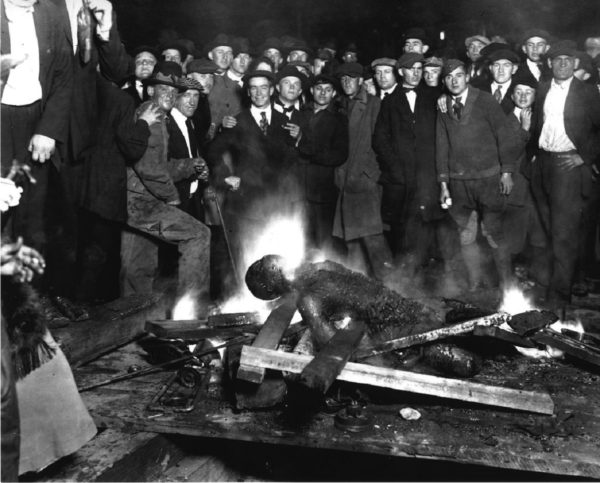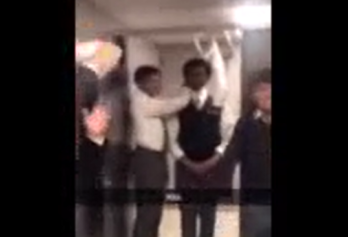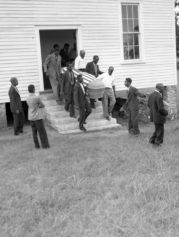
This year marks the centennial of what has become known as the Red Summer, when in 1919, America was stained red with the blood of Black victims who were lynched, burned, shot and beaten to death by white mobs across the country. In what is regarded as one of the worst periods of white-on-Black mob violence in U.S. history, over 10 months in at least 25 riots, more than 250 Black people were killed with impunity, and thousands saw their homes and businesses destroyed in the conflagration, all without justice being served.
A number of factors and circumstances were catalysts for Red Summer. During World War I, with men serving in the military and restrictive immigration policies, the East and Midwest experienced labor shortages. This was also the time of the Great Migration when hundreds of thousands of African-Americans left the South to escape Jim Crow terror, oppression and exploitation. Working-class whites resented Black workers as potential economic competitors. According to Dr. George Edmund Haynes, who wrote a report on Red Summer, “the persistence of unpunished lynching” fueled a white male mob mentality, and fostered a sense of self-defense among 100,000 Black veterans who had served in the war and migrated out of the South. “In such a state of public mind,” Haynes wrote, “a trivial incident can precipitate a riot.”
The violence of Red Summer took place in the North and South alike, with Charleston, South Carolina, as the first location to experience bloodshed. White sailors set off riots after attacking a Black man who refused to step off the sidewalk for them, while another white gang killed a Black man in a pool hall. Hundreds of white sailors descended upon the Black community, some of whom armed themselves and fought back.
Other cities were hit as well. In Pittsburgh, the Klan posted notices in Black communities: “The war is over, negroes. Stay in your place. If you don’t, we’ll put you there.” On September 28, 1919, a white lynch mob in Omaha, Nebraska, gathered after a white woman, Agnes Loebeck, accused Will Brown, a Black man, of rape. The whites burned down the Douglas County Courthouse and lynched Brown, where he was being held.
The three deadliest race riots of Red Summer took place in Chicago, Elaine, Arkansas, and Washington, D.C.
In Chicago, a housing shortage had worsened the city’s racial tensions, as the Black population had increased from 44,000 in 1910 to 235,000 in 1930. On July 27, 1919, violence erupted when a Black teen named Eugene Williams swam along a whites-only beach on Lake Michigan. He was stoned by white men and drowned. Police refused to arrest the white men responsible and arrested a Black man instead, leading to escalated violence. Ultimately, 23 Blacks and 15 whites died, 537 people were injured, and 1,000 Black families were rendered homeless.
When Black sharecroppers in Elaine, Arkansas, met to organize and form a labor union, at least 200 people were lynched. Journalist Ida B. Wells wrote in her report that a mob dragged and nearly murdered a woman named Lula Black for wanting to join the union, and lynched another. “They knocked her down, beat her over the head with their pistols, kicked her all over the body, almost killed her, then took her to jail,” Wells wrote. “The same mob went to Frank Hall’s house and killed Frances Hall, a crazy old woman housekeeper, tied her clothes over her head, threw her body in the public road where it lay thus exposed till the soldiers came Thursday evening and took it up.” Black bodies were dumped in the Mississippi River or left to rot. White elites claimed the Black people had conspired to take the white planters’ land and rape their women.
In July 1919 in Washington, D.C., mobs of white military men targeted the Black community and Black soldiers returning from the war. The “mob in uniform” said they were retaliating against the alleged rape of a white woman — the wife of a Navy employee — by a Black man. As Black people were brutally beaten, the police refused to intervene. One Black Washington resident, Carrie Johnson, 17, shot at white intruders, and killed a white police officer who broke into her bedroom. Her manslaughter conviction was overturned when she claimed self-defense, and she was regarded a hero, one of many examples of Black people who defended themselves and fought back against white terror. The NAACP counted 2,000 Black people, many of them with guns, patrolling the nation’s capital ready to “die for their race, and defy the white mob.”
The terror, death and destruction visited upon Black people at the time was by no means limited to Red Summer. For example, in 1921, the thriving Black community of Greenwood in Tulsa, Oklahoma — known as “Black Wall Street” — was destroyed by white mob violence. As a result of an aerial bombing and arson from white rioters and looters, 35 city blocks were burned to the ground, over 800 people were injured and an estimated 300 people died. Similarly, in 1920, several hundred whites burned down the Black village of Rosewood, Florida, hunted for Black people in the countryside and lynched them following unsubstantiated accusations a Black man had raped and beaten a white woman.
Typically called race riots or examples of racial unrest, Red Summer was the handiwork of anti-Black, white lynch mob violence. Following Red Summer, the civil rights and anti-lynching movements were given new life, and NAACP membership increased from 9,000 to 100,000 members.
In today’s era of white racial backlash and white supremacist violence, much had been forgotten about the massacres of Red Summer, though that is changing. For example, the National Memorial for Peace and Justice and Legacy Museum in Montgomery, Alabama documents the history of lynching in America and features exhibits on Red Summer. America’s Black Holocaust Museum features digital exhibits on the victims of lynching and Red Summer, while Visualizing the Red Summer is a comprehensive digital archive, timeline and map of the lynchings and riots of 1919. The Elaine Massacre Memorial is being constructed and is set to open in September in Arkansas, and federal anti-lynching legislation passed in the Senate just last year, a century after such legislation was first introduced.
Remembering Red Summer is the key to preventing lynchings and other future racial atrocities.


